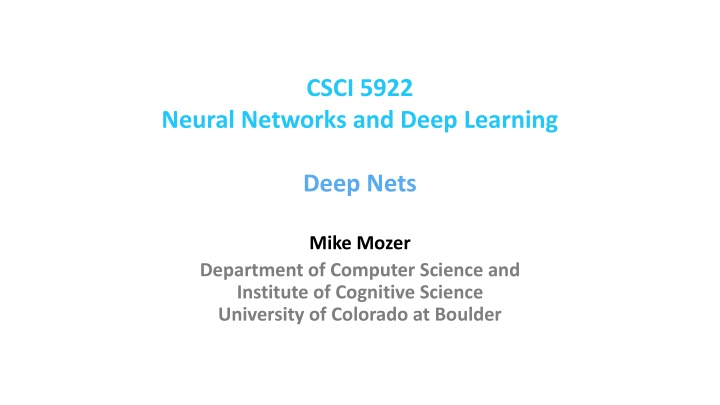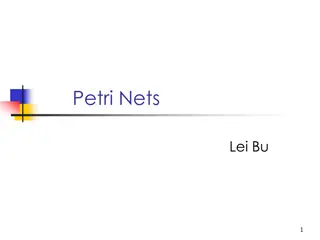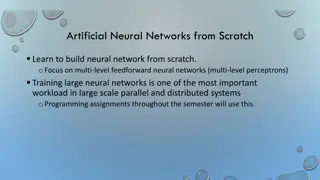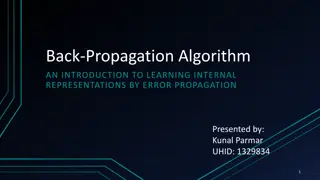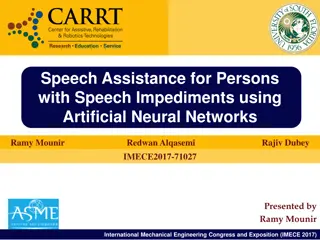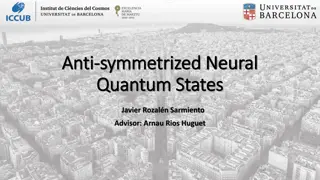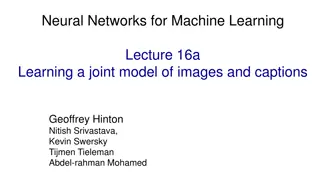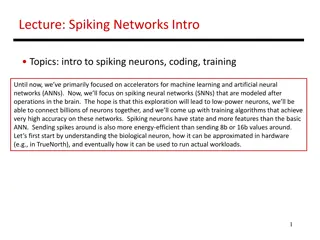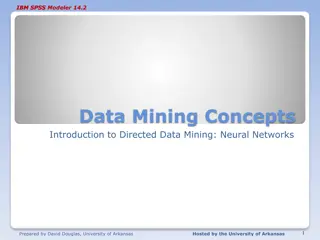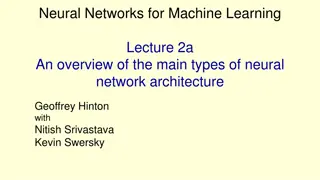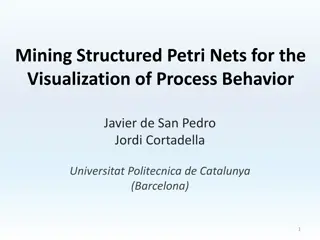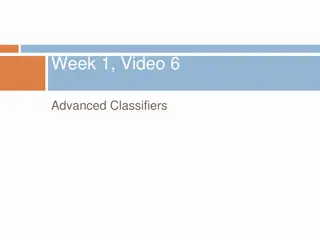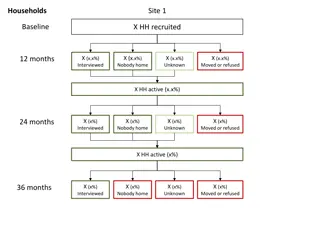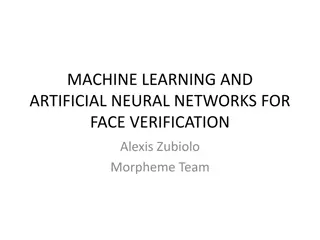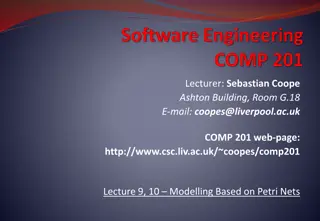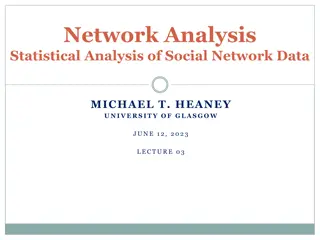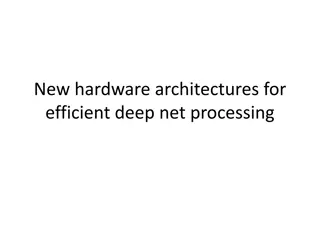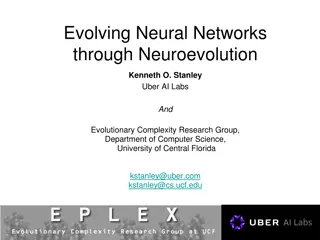CSCI 5922 Neural Networks and Deep Learning Deep Nets
"Explore the world of neural networks and deep learning with Mike Mozer at the University of Colorado at Boulder. Discover cutting-edge research in the field of artificial intelligence taught by a renowned expert in both computer science and cognitive science."
Download Presentation

Please find below an Image/Link to download the presentation.
The content on the website is provided AS IS for your information and personal use only. It may not be sold, licensed, or shared on other websites without obtaining consent from the author.If you encounter any issues during the download, it is possible that the publisher has removed the file from their server.
You are allowed to download the files provided on this website for personal or commercial use, subject to the condition that they are used lawfully. All files are the property of their respective owners.
The content on the website is provided AS IS for your information and personal use only. It may not be sold, licensed, or shared on other websites without obtaining consent from the author.
E N D
Presentation Transcript
CSCI 5922 Neural Networks and Deep Learning Deep Nets Mike Mozer Department of Computer Science and Institute of Cognitive Science University of Colorado at Boulder
Why Stop At One Hidden Layer? E.g., vision hierarchy for recognizing handprinted text Word output layer Character hidden layer 3 Stroke hidden layer 2 Edge hidden layer 1 Pixel input layer
Different Levels of Abstraction From Ng s group Hierarchical Learning Natural progression from low level to high level structure as seen in natural complexity Easier to monitor what is being learnt and to guide the machine to better subspaces A good lower level representation can be used for many distinct tasks 5
Why Deeply Layered Networks Fail Credit assignment problem How is a neuron in layer 2 supposed to know what it should output until all the neurons above it do something sensible? How is a neuron in layer 4 supposed to know what it should output until all the neurons below it do something sensible?
Deeper Vs. Shallower Nets Deeper net can represent any mapping that shallower net can Use identity mappings for the additional layers Deeper net in principle is more likely to overfit But in practice it often underfits on the training set Degradation due to harder credit-assignment problem CIFAR-10 Deeper isn t always better! ImageNet thin=train, thick=valid. He, Zhang, Ren, and Sun (2015)
Why Deeply Layered Networks Fail Vanishing gradient problem With logistic or tanh units 1 ??? ??? ??= = ??1 ?? 1 + exp( ??) ??? ??? = 1 + ?? 1 ?? ??= tanh ?? gradient Error gradients get squashed as they are passed back through a deep network ? ? ? ? layer
Why Deeply Layered Networks Fail gradient Exploding gradient problem with linear or ReLU units ? ? ? ? layer ?? ??= ? ? ? ????????? ? = max(?,?) ? ?? ??= ? ? = ? ????????? ??? ? ?? ??> ? can be a problem when ? ?
Hack Solutions gradient Using ReLUs can avoid squashing of gradient ? ? ? ? layer Use gradient clipping ?? ???? ????~??? ??,??? ??, for exploding gradients Use gradient sign ?? ???? ????~???? for exploding & vanishing gradients
Hack Solutions Hard weight constraints ? ??? ??,? ?? ? avoids sigmoid saturation for vanishing gradients may prevent gradients from blowing up by limiting error gradient scaling
Hack Solutions Batch normalization As weights ?? are learned, the distribution of ?? activations changes, Affects ideal ?? ?? Affects appropriate learning rate for ?? ?? Solution ?? ensure that distribution of activations for each unit doesn t change over the course of learning
Hack Solutions Batch normalization [LINK] [LINK] ??: activation of a unit in any layer for minibatch example ? ?? ?? ?? parameters ?? and ?? trained via gradient descent separate parameters for each neuron
Hack Solutions Unsupervised layer-by-layer pretraining Goal is to start weights off in a sensible configuration instead of using random initial weights Methods of pretraining autoencoders restricted Boltzmann machines (Hinton s group) The dominant paradigm from ~ 2000-2010 Still useful today if not much labeled data lots of unlabeled data
Autoencoders Self-supervised training procedure Given a set of input vectors (no target outputs) Map input back to itself via a hidden layer bottleneck How to achieve bottleneck? Fewer neurons Sparsity constraint Information transmission constraint (e.g., add noise to unit, or shut off randomly, a.k.a. dropout)
Autoencoder Combines An Encoder And A Decoder Decoder Encoder
Stacked Autoencoders ... copy deep network Note that decoders can be stacked to produce a generative domain model
Restricted Boltzmann Machines (RBMs) For today, RBM is like an autoencoder with the output layer folded back onto the input. We ll spend a whole class on probabilistic models like RBMs Additional constraints ? ??? ?? ??? = ???? ?? ??? probabilistic neurons
Depth of ImageNet Challenge Winner source: http://chatbotslife.com
Trick From Long Ago To Avoid Local Optima Add direct connections from input to output layer Easy bits of the mapping are learned by the direct connections Easy bit = linear or saturating-linear functions of the input Often captures 80-90% of the variance in the outputs Hidden units are reserved for learning the hard bits of the mapping They don t need to learn to copy activations forward for the linear portion of the mapping Problem Adds a lot of free parameters
Latest Tricks Novel architectures that skip layers have linear connectivity between layers Advantage over direct-connection architectures no/few additional free parameters
Deep Residual Networks (ResNet) Add linear short-cut connections to architecture Basic building block activation flow ? = ??? ??? ? = ? ? + ? Variations allow different input and output dimensionalities: ? = ? ? + ??? ? can have an arbitrary number of layers He, Zhang, Ren, and Sun (2015)
ResNet kklk He, Zhang, Ren, and Sun (2015)
ResNet Top-1 Error % He, Zhang, Ren, and Sun (2015)
A Year Later Do proper identity mappings He, Zhang, Ren, and Sun (2016)
Highway Networks Suppose each layer of the network made a decision whether to copy input forward: ? = ? perform a nonlinear transform of the input: ? = ?,? Weighting coefficient ? ? = ? ?,? + ? ? ? Coefficient is a function of the input: ? = ??,?? Srivastava, Greff, & Schmidhuber (2015)
Highway Networks Facilitate Training Deep Networks Srivastava, Greff, & Schmidhuber (2015)
